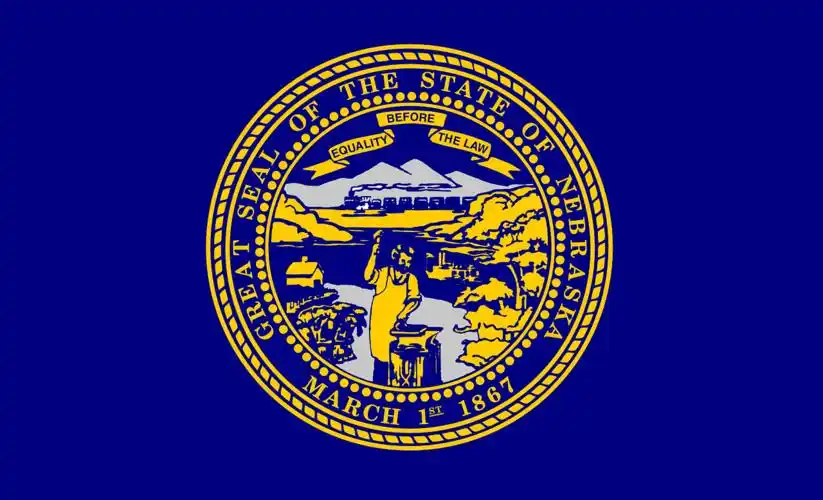- Focus on product development, production and sales.

Nebraska is located in the Midwest of the United States, at the center of the plateau. It borders South Dakota to the north, Kansas to the south, Wyoming to the west, Iowa across the Missouri River to the east, and Colorado to the southwest. Nebraska has an area of approximately 200000 square kilometers and a flat terrain. The western part is the Great Plains, while the eastern part is a fertile glacial moraine cut plain formed by glacier melting. The state has a continental climate with large seasonal temperature differences, with an average annual temperature of 9.3 degrees Celsius and an annual rainfall of 600 millimeters. The climate is variable, with blizzards in winter and hurricanes, thunderstorms, and hail in summer.
Population and Geography
In 2020, the population of Nebraska will be about 1.962 million, accounting for 0.59% of the total population of the United States. Among them, white people account for 88.1%, Spanish or Latinx people account for 11.4%, black or African American people account for 5.1%, and Asian people account for 2.7%. There are 93 counties in the state, with Lincoln as the capital and Omaha as the largest city.
historical background
The history of Nebraska can be traced back to 1867, when shortly after the end of the Civil War, Nebraska became the 37th state of the United States and its capital was moved from Omaha to Lancaster. After the assassination of Abraham Lincoln, Lancaster was renamed Lincoln City.
Transportation and Politics
Nebraska has a well-developed transportation network with 6 interstate highways, 18 national highways, and over 100 airports of various types. The state has a unique political system, with a unicameral parliament where members do not represent the current political party. The current governor is Republican Pete Ricketts. Nebraska has four major political parties: the Republican Party, the Democratic Party, the Nebraska Party, and the Green Party, with the Republican Party being the largest party.
Economic situation
Nebraska is one of the leading agricultural states in the United States, currently committed to developing scientific agricultural technology. The main economic indicators of the state include GDP and agricultural output value.
Economic Overview of Nebraska
Nebraska is a state in the Midwest of the United States known for its agriculture, manufacturing, and abundant natural resources. The economic structure of the state is diverse, mainly including agriculture, manufacturing, and service industries.
Agriculture
Nebraska is one of the major agricultural states in the United States, with major agricultural products including corn, soybeans, wheat, and beef. Agriculture is crucial to the state's economy, with its output ranking sixth in the country. The state ranks fifth in corn and wheat production nationwide, third in sorghum production, and sixth in sugarcane production. In addition, Nebraska is also one of the top pastoral areas in North America, known for its high levels of dairy and beef cattle farming.
manufacturing
Nebraska has a developed manufacturing industry, mainly producing food processing, machinery and equipment, and metal products. Omaha is the headquarters of several large companies, such as Berkshire Hathaway and United Health Group. These companies have made significant contributions to the economic growth of the state.
Service industry
The service industry plays an important role in the Nebraska economy, including financial services, insurance, and healthcare. Omaha, as the largest city in the state, showcases its prosperity and vitality.
natural resources
Nebraska has abundant oil resources, with an annual production of 5 million barrels in the southwestern region. In addition, the state's power supply is also very abundant, with an annual power generation of over 17 billion kilowatt hours, providing strong support for industrial development.
major city
The main cities in Nebraska include Omaha and Lincoln.
The investment opportunities in Nebraska mainly include the following aspects:
Tax incentives: Nebraska's corporate income tax rate is 7.81%, much lower than some other states' tax rates. In addition, Nebraska provides special tax incentives for certain industries such as agriculture, manufacturing, and research and development, and does not have sales tax or personal income tax, providing a more flexible and competitive tax environment for businesses.
Legal environment: The legal environment in Nebraska is stable and transparent, providing good legal protection and business environment for businesses. Nebraska has a sound legal system, simplified legal procedures, and relatively simple business registration and operation processes. In addition, Nebraska has a comprehensive intellectual property protection system that provides strong protection for businesses' trademarks, patents, and copyrights.
Business Atmosphere and Resources: Nebraska has a vibrant business atmosphere and abundant business resources. Nebraska has abundant agricultural resources and a manufacturing base, making it an important agricultural and food processing center in the United States. In addition, Nebraska has top-notch universities and research institutions, providing high-quality talent and innovative resources for businesses.
Geographical location and transportation: Nebraska is located in the Midwest of the United States, with a superior geographical location and convenient transportation. Nebraska has a well-developed network of roads, railways, and aviation, making it easy for businesses to trade with the global market. In addition, Nebraska borders Canada, providing broader international cooperation and development opportunities for businesses.
Investment facilities and preferential policies: Nebraska has world-class investment facilities and first-class infrastructure, and products reach the market quickly. Nebraska has built a large number of convenient transportation facilities and industrial parks, providing a series of preferential policies for enterprises investing and starting businesses in Nebraska, USA. In addition, Nebraska also implements the "Rural Enterprise Assistance Program" to help rural areas obtain loans, establish businesses, and provide consulting, technical guidance, and other services.